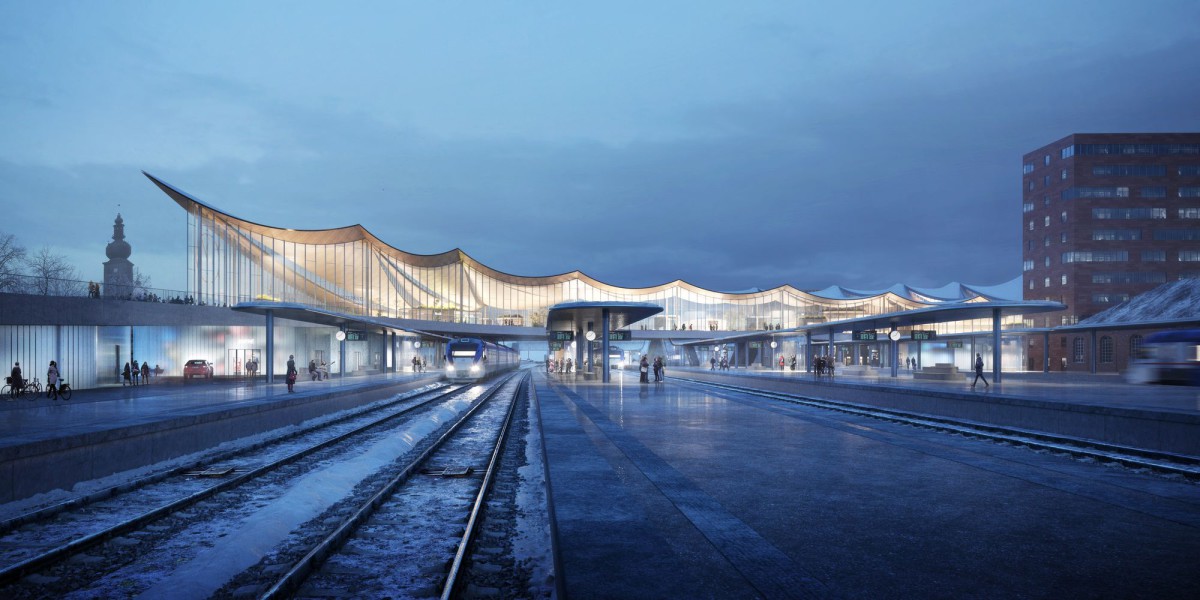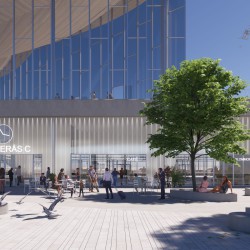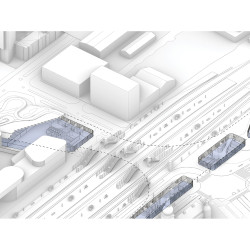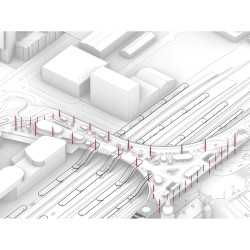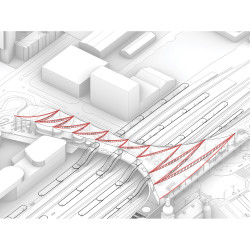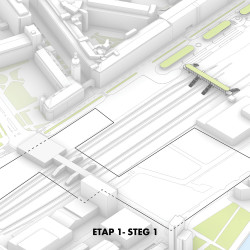Västerås Travel Center is a new transportation hub for trains, buses, taxis, bikes, and pedestrians in the heart of Västerås, one of Sweden’s largest cities.
The existing rail station bisects the neighborhoods of Västerås rather than linking them together. In its place, we propose a center that behaves as a dynamic urban node and visual landmark thatunifies the city’s urban flows under one floating roof. The roof appears as a continuous thin sheet gently lifted at its four corners, collecting multiple layers of the travel center’s public programsand urban spaces within a cohesive identity. As a continuous extension of the city’s existing structure, the roof adapts to the programmatic needs of the city below, while also producing a rollinglandscape above, thus generating magnificent views of Lake Mälaren and the city center. Rather than simply becoming infrastructure for public transportation, the new Västerås Travel Center isshaped by the flow of people and public life, transforming infrastructural necessity into opportunities for social interaction.
_

